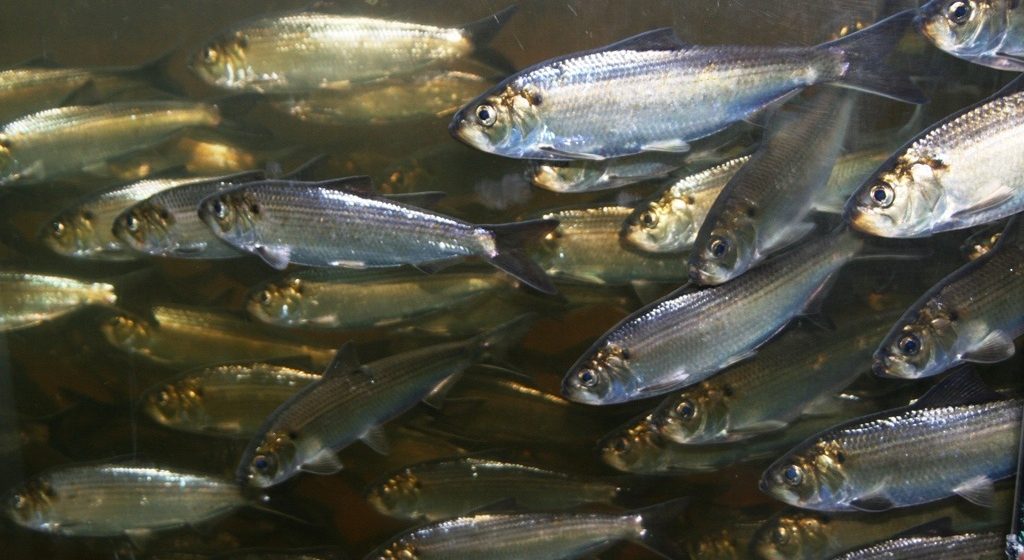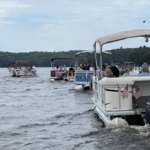COMMUNITY COMMENTARY: Slippery facts on Sheepscot Pond re-introduction of species

Alewives by John Burrows (source: mainerivers.org)
by Buck O’Herin
Montville resident
Feelings are running high in some communities about the potential re-introduction of sea-run fish species into Sheepscot Pond and the potential for these species to impact the fresh water fishery through disease and predation. The front page article in The Town Line newspaper on January 25 quoted several reasons why a couple of community groups oppose the re-introduction of these species. Many of the points listed were misleading and did not give appropriate context, and some were outright false.
It is crucial to remember that both alewives and sea lampreys are native to Maine and our rivers, lakes, and ponds. They both spend time at sea and migrate back to lakes and rivers to spawn. Sheepscot Pond represents 40 percent of the historic alewife habitat above Head Tide in the Sheepscot River. Many Maine lakes have healthy runs of alewives and other sea-run species and also maintain healthy populations of freshwater game fish. Alamoosook Lake, in Orland, has had an alewife migration for years, and the U.S. Fish and Wildlife Service has a hatchery there. The lake has a healthy fresh water fishery that includes salmon, brook trout, brown trout, bass, and eel.
The U.S. Fish and Wildlife service tested alewives from the St. Croix River from 2014 to 2016 for seven different diseases. None were found to be carrying any diseases. The Maine Department of Inland Fisheries and Wildlife has been offered assistance to ensure there is proper filtration and disinfection of water at the Palermo facility. Even though most other IF&W hatcheries have this equipment, the Department has so far chosen not to accept the help.
Adult sea lamprey cannot survive in freshwater and die after spawning. As young adults, they are primarily trying to get to sea, not feed when they do attach to fresh water fish. It is very common to install small notches in a dam to make sure young adult lampreys can get to sea with a trickle of water, even if water is not flowing over the dam. Sea lamprey are probably already in Sheepscot Pond. They can get through the open fish ladder at the Coopers Mills Dam, into Long Pond, and over the Sheepscot Pond dam as long as water is flowing.
The proposal in front of the legislature would open the Sheepscot Pond fish ladder year-round, that IF&W currently blocks for two months of the year. Water already flows over the dam, especially in the spring. U.S. Geological Survey records show the Sheepscot River flows at an average of 734 cubic feet per second in April. The fish ladder at Sheepscot Pond is designed to use about 6 cubic feet per second. Allowing the fish ladder to be open increases flow to the river by only 0.82 percent. The lake level would not be significantly affected.
We should be thoughtful about how we make this decision and depend on the science. There is abundant evidence that restoring fish passage to the entire Sheepscot River is beneficial for all native fish species and the Sheepscot Pond ecosystem.
Responsible journalism is hard work!
It is also expensive!
If you enjoy reading The Town Line and the good news we bring you each week, would you consider a donation to help us continue the work we’re doing?
The Town Line is a 501(c)(3) nonprofit private foundation, and all donations are tax deductible under the Internal Revenue Service code.
To help, please visit our online donation page or mail a check payable to The Town Line, PO Box 89, South China, ME 04358. Your contribution is appreciated!




Leave a Reply
Want to join the discussion?Feel free to contribute!